Purple is a regal color, and what better way to add a touch of sophistication to your garden than by adding a few purple shade perennials? These flowers are perfect for adding long-lasting color to a shaded area of your garden, and they will bloom year after year with proper care.
They are perfect for flower beds and do well in part shade or even full shade for some varieties. They come in a variety of colors or shades of purple, and some have dense foliage and make an excellent choice for your flower garden.
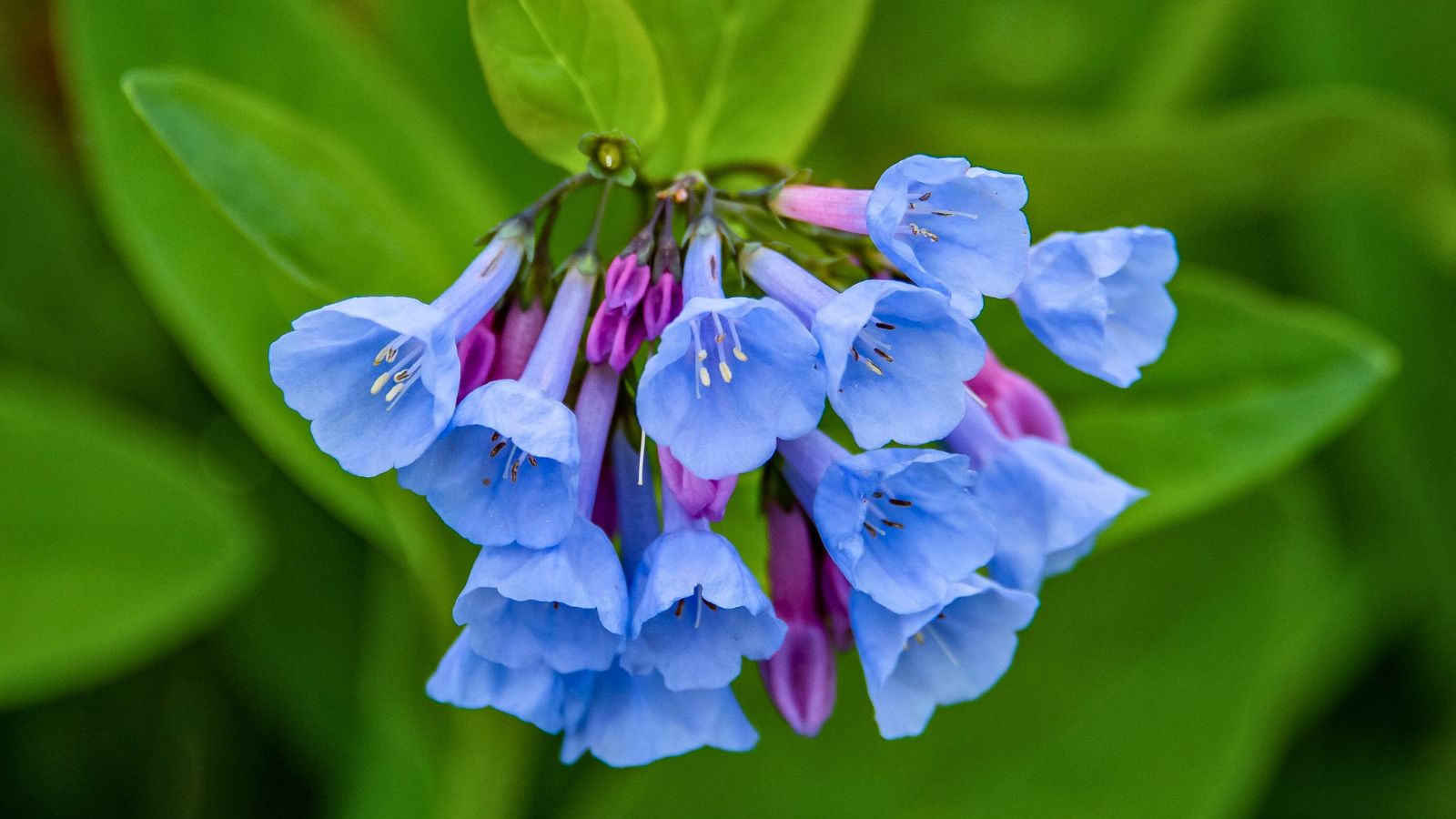
1. Hardy geranium, cranesbill (Geranium Brookside)
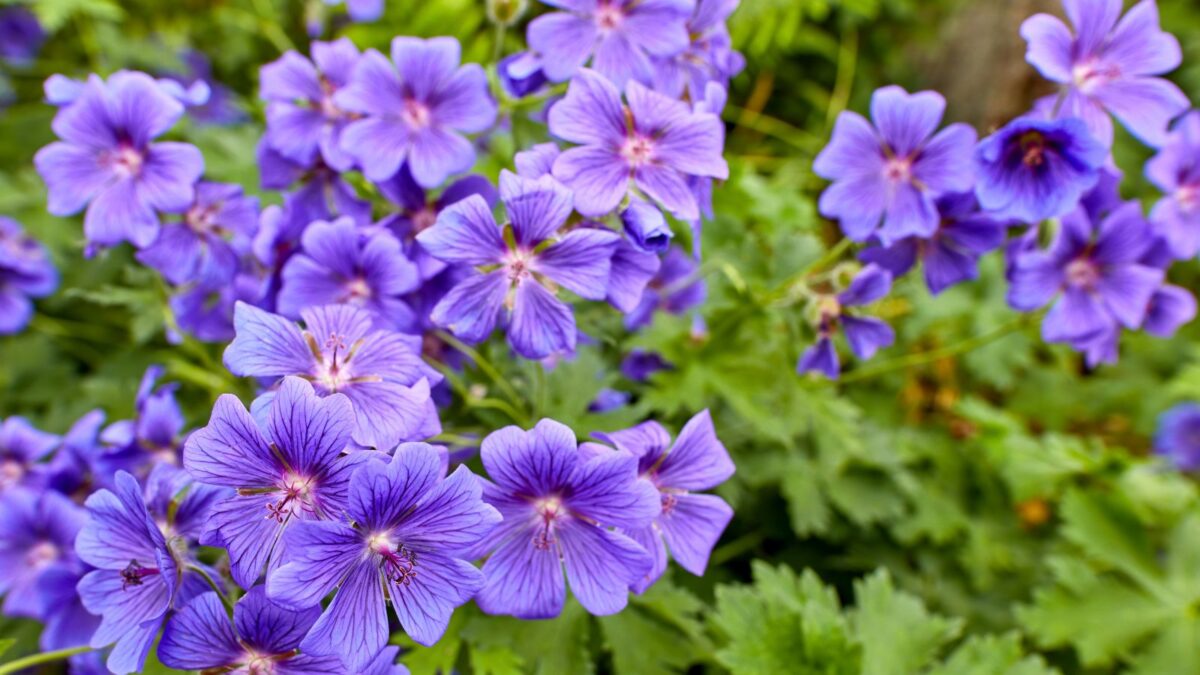
Cranesbill, also known as Geranium ‘Brookside’, is a cultivar of the hardy geranium species Geranium pratense.
The plant typically grows to a height of 1 to 2 feet and a spread of 2 to 3 feet. Its deeply cut, green foliage forms a low, spreading mound. From late spring to mid-summer, it produces large, showy, violet-blue flowers about 2 inches in diameter.
It prefers moist, well-drained soil. While it does best in partial to full sun, it grows well in partial shade, too! It is hardy in USDA zones 4 to 8, which means it can tolerate winter temperatures as low as -30 degrees Fahrenheit.
2. Jacob’s ladder (Polemonium)
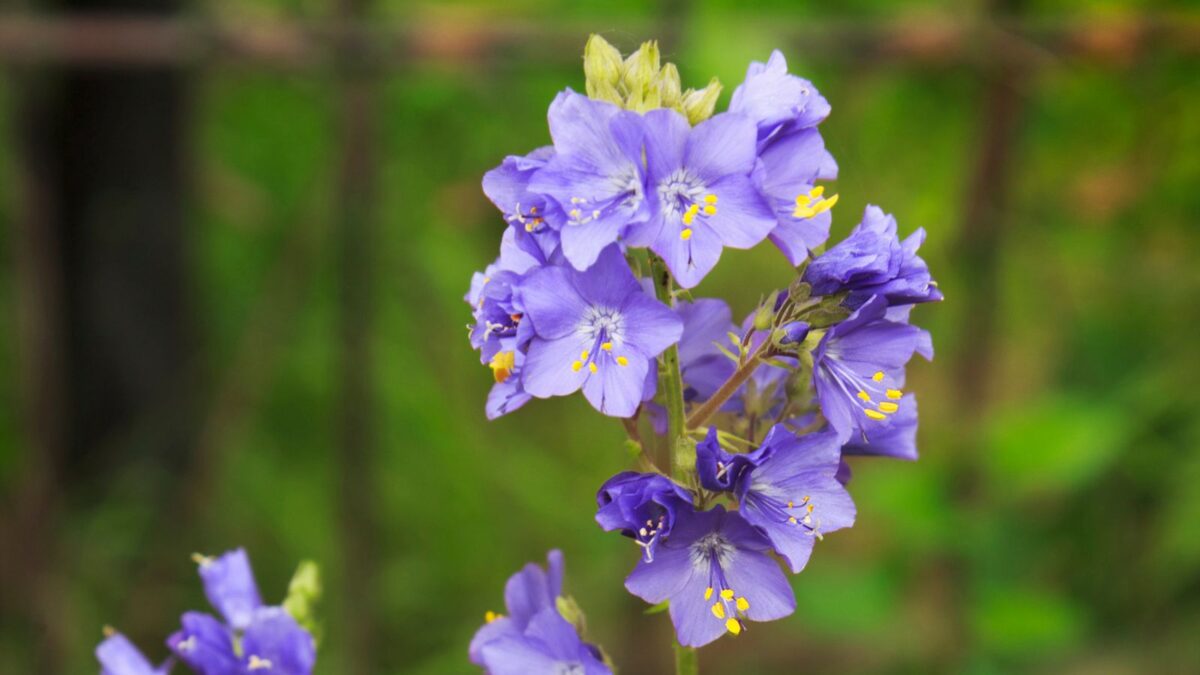
Greek Valerian, also known as “Jacob’s Ladder,” is a perennial plant that produces clusters of alluring purple blooms with delicate petals.
As a spring ephemeral wildflower, this herbaceous perennial produces striking blue or purple hues with a prominent yellow center. It flourishes in a shaded location with loose, well-drained soil. Darker-leaf varieties can tolerate more sunlight if watered frequently, and regular watering also helps to prolong the blooming period.
3. Lungwort (Pulmonaria)
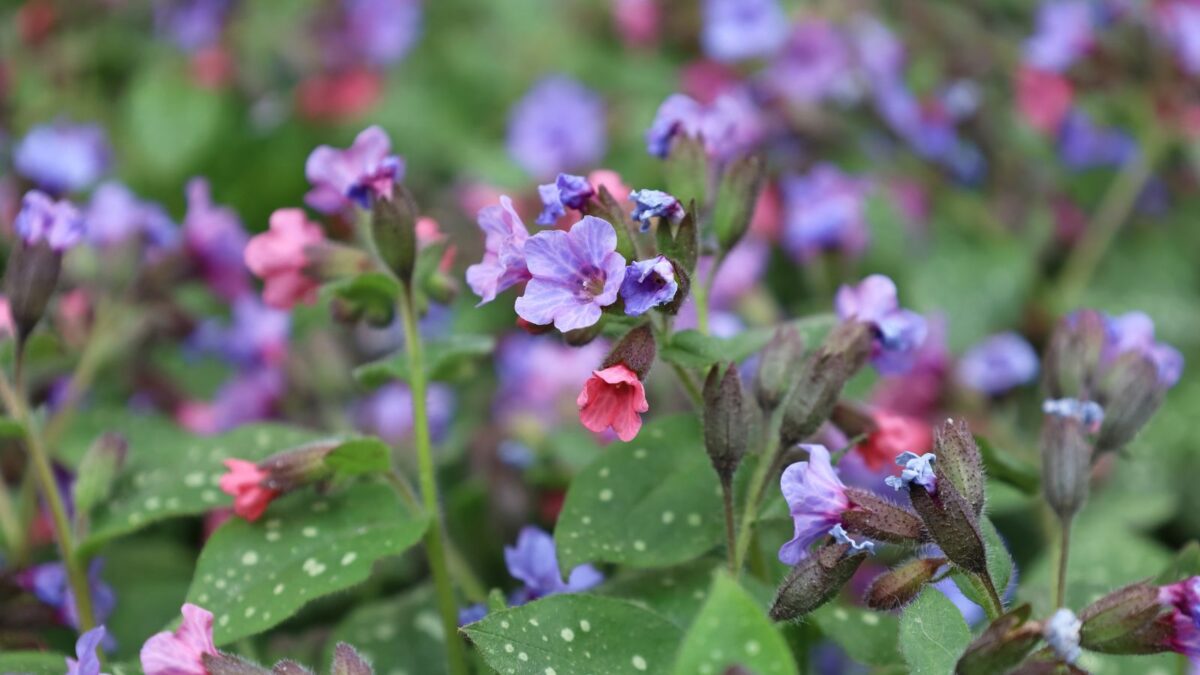
Lungwort (Pulmonaria) is an herbaceous perennial plant belonging to the Boraginaceae family. It is native to Europe and western Asia and is often grown for its attractive foliage and delicate flowers.
In early spring, lungwort produces clusters of bell-shaped flowers that are usually pink, blue, or purple in color. The lovely flowers are held above the foliage on tall stems and attract pollinators such as bees and butterflies.
It’s a hardy plant that grows well in light shade or dappled sunlight. It prefers moist, well-drained soil and can be propagated by division in the spring or fall.
4. Creeping phlox (Phlox stolonifera)
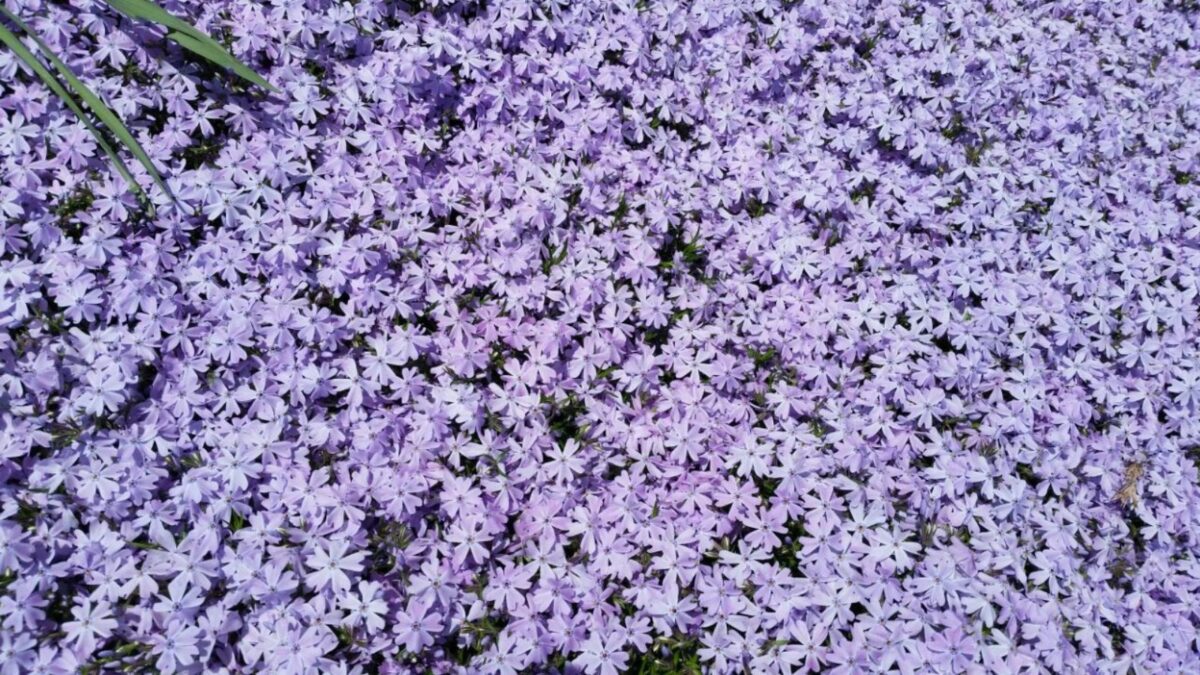
Phlox stolonifera, also known as Creeping phlox or Moss phlox, are perennial plants belonging to the Polemoniaceae family. It is native to eastern North America and is often grown for its attractive foliage and showy, fragrant flowers. It’s one of the more popular garden phlox varieties.
Creeping phlox grows mat-like, with low, spreading stems that root at the nodes and form clumps. Its leaves are evergreen and lance-shaped, with a glossy texture and a medium green color. In early spring, it produces clusters of small, star-shaped flowers that are usually pink, purple, or blue in color.
It is a low-maintenance plant ideal for ground cover, edging borders, or rock gardens. Its showy flowers and attractive foliage make it a popular choice for ornamental gardening.
5. Wild blue phlox (Phlox divaricata)
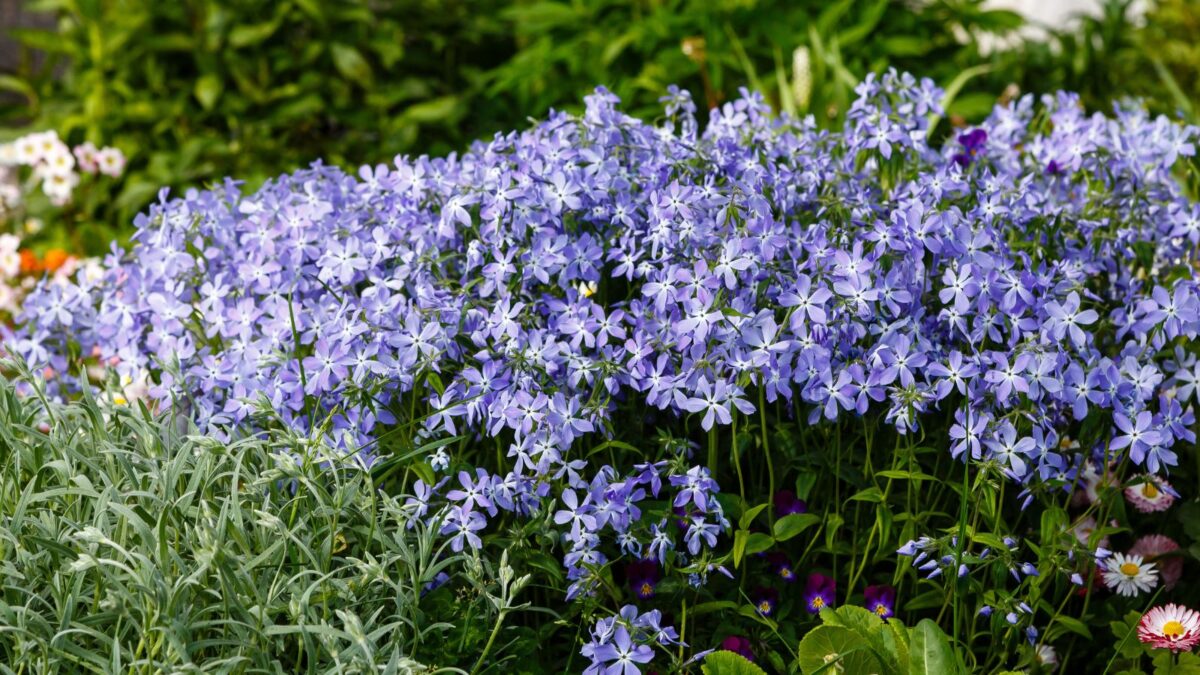
Phlox divaricata, commonly known as woodland phlox or wild blue phlox, is a herbaceous perennial plant native to eastern North America. It belongs to the Polemoniaceae family and is often grown for its showy, fragrant flowers and attractive foliage.
Woodland phlox grows to a height of 12 to 18 inches and has spreading, rhizomatous roots that form clumps. Its leaves are lance-shaped and dark green in color, with a slightly rough texture. It prefers moist, well-drained soil and partial shade to full sun.
It can be propagated by division or by taking stem cuttings in the summer. It is a low-maintenance plant ideal for rock gardens or as a ground cover.
6. Rocky mountain columbine (Aquilegia caerulea)
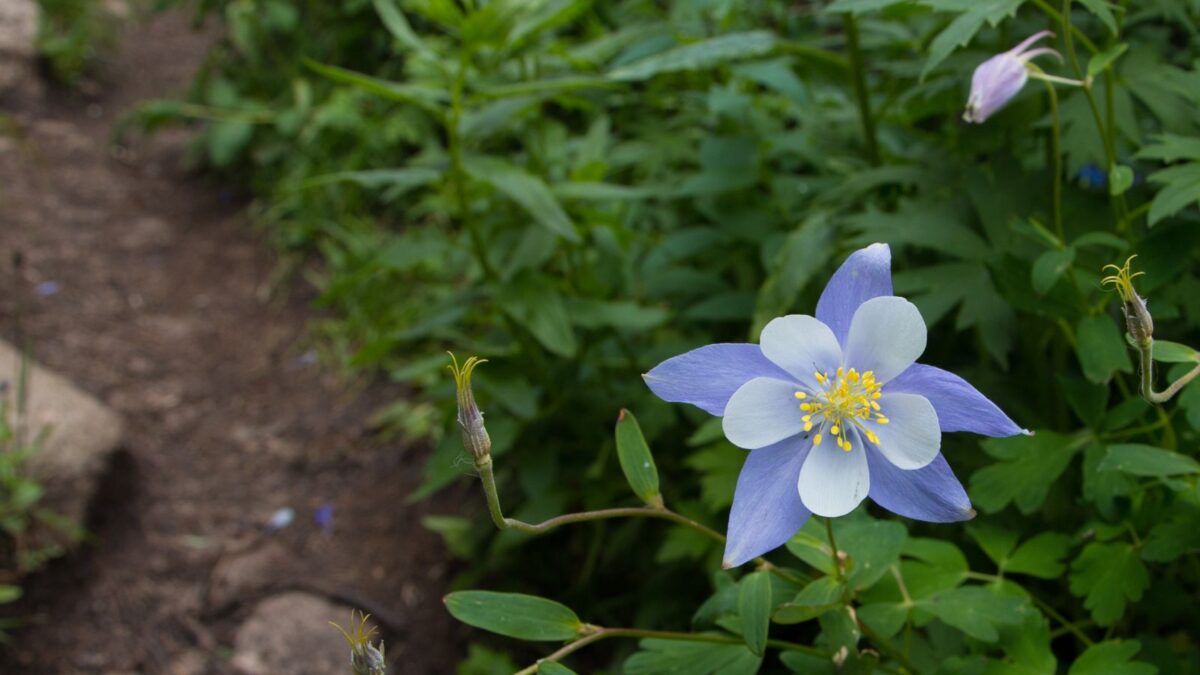
Rocky Mountain Columbine is native to the Rocky Mountains in North America. It is the state flower of Colorado and is often grown for its showy, unique flowers and attractive foliage.
The plant grows up to 2 feet tall and has a clumping habit. The leaves are light green, lobed, and delicate-looking. In late spring to early summer, it produces striking, bi-colored flowers that are typically blue or purple with white petals and have spurs that stick out behind the petals.
Rocky Mountain Columbine is well-suited to growing in mountain meadows, rock gardens, and woodland gardens. It prefers moist, well-drained soil and partial to full sun but can tolerate some shade.
7. Siberian squill (Scilla siberica)

Siberian squill is a bulbous perennial plant that is native to southwestern Russia and the Caucasus. It is a popular garden plant due to its striking blue flowers, which emerge in early spring and provide a welcome burst of color after the winter months.
It grows to a height of 4 to 6 inches and produces several narrow, strap-like leaves about 6 inches long. In early spring, it produces clusters of bell-shaped, deep blue flowers about 1 inch long.
The Siberian squill prefers well-drained soil and partial sun but can tolerate partial shade. Once established, it is adaptable to a range of soil types and can tolerate drought. The plant is low-maintenance and does not require frequent watering or fertilization.
8. Virginia bluebells (Mertensia virginica)
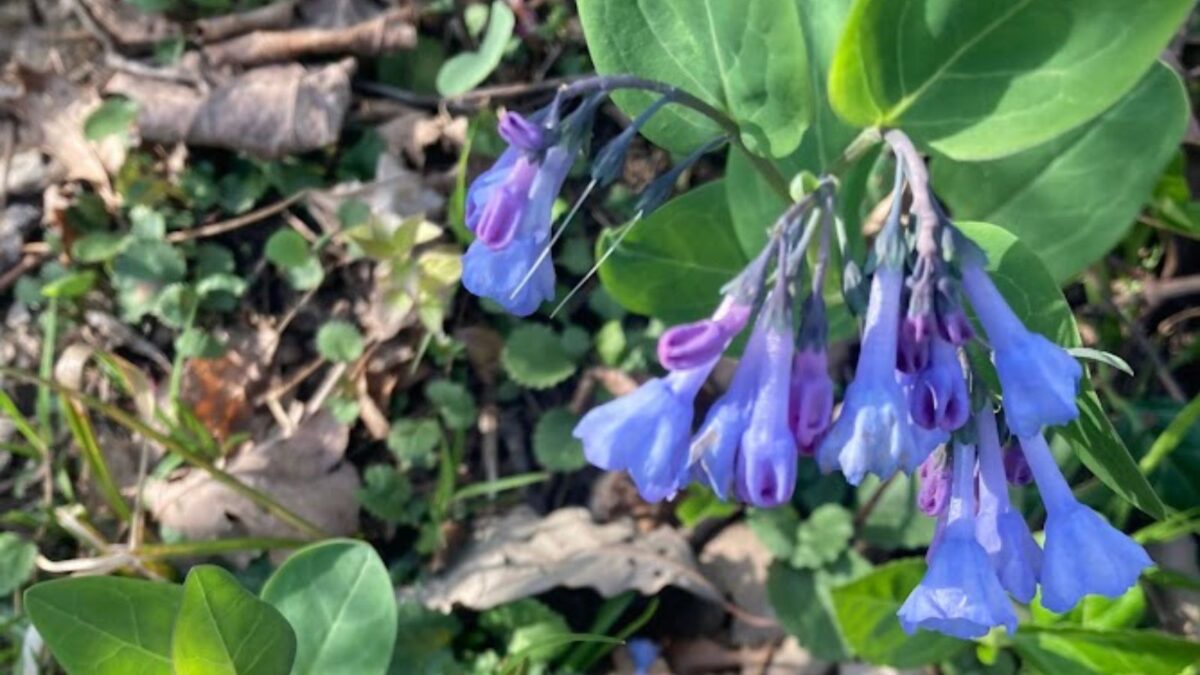
Virginia bluebells are native North American wildflowers commonly found in woodlands, riverbanks, and meadows.
They grow to a height of 1 to 2 feet and have smooth, gray-green leaves about 2 to 5 inches long. The leaves grow in a basal rosette and are shaped like elongated ovals. In early spring, the plant produces clusters of bell-shaped flowers that are pink when they first emerge but gradually turn blue to purple as they mature.
Virginia bluebells prefer moist, well-drained soil and partial to full shade. They can tolerate some sun but may wilt if they receive too much direct sunlight. They are low-maintenance plants that do not require fertilization or regular watering. After the flowers bloom, the plant goes dormant and dies back to the ground.
9. Toad lilies (Tricyrtis spp.)
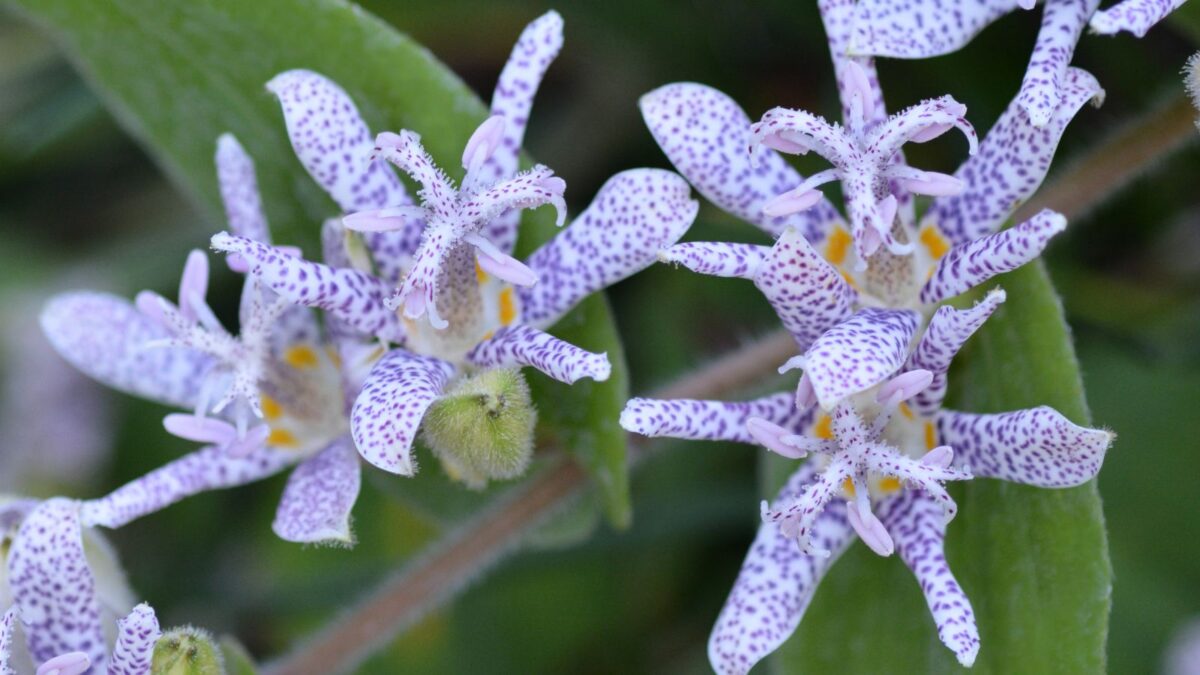
Toad lilies are a group of flowering plants native to parts of Asia, including Japan, China, and Korea. They are known for their unique and attractive flowers, which resemble small orchids and are often spotted or speckled with purple or brown.
Toad lilies grow to 1 to 3 feet, depending on the variety. The flowers are typically white, yellow, or purple, with spots or speckles on the petals. The leaves are dark green, pointed, and often glossy.
They prefer moist, well-drained soil and partial to full shade. They are adaptable to different soil types but prefer soil rich in organic matter. They can be propagated by division or by taking stem cuttings in the summer.
10. Bigleaf hydrangea (Hydrangea macrophylla)
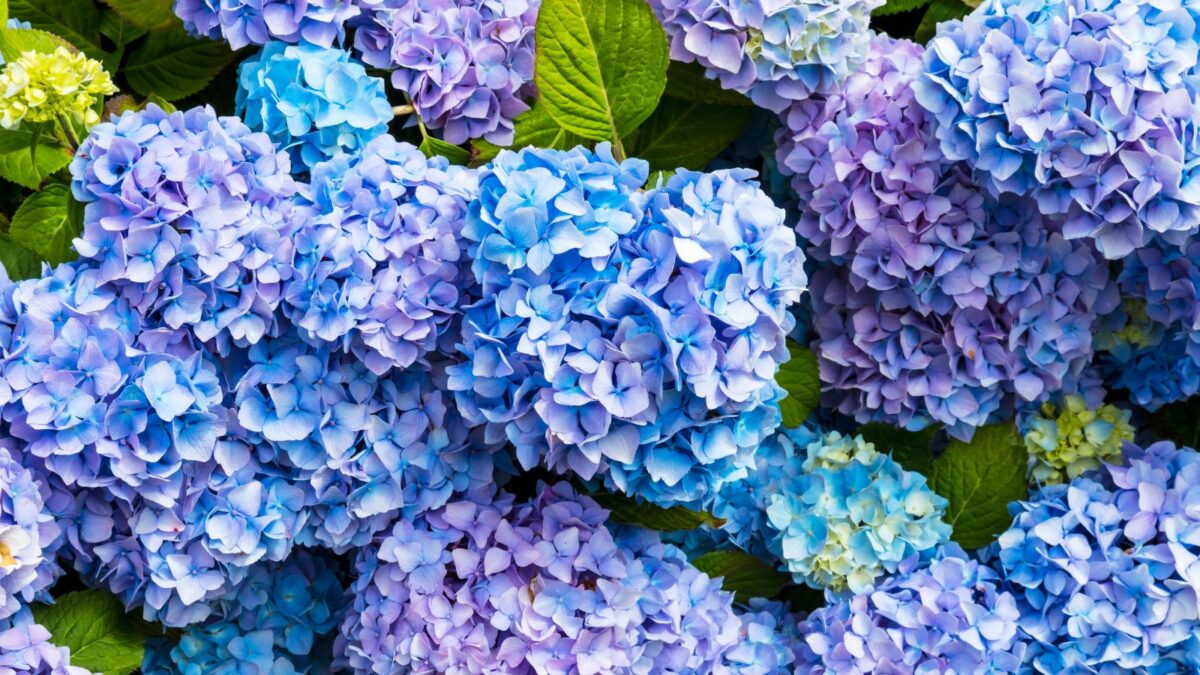
Bigleaf hydrangea is a popular deciduous shrub prized for its large, showy blooms. This hydrangea typically grows 3-6 feet tall and wide and has broad, dark green leaves that can grow up to 8 inches long.
The most memorable feature of this plant is its flowers, which are large clusters of blooms that can be pink, blue, purple, or white depending on the acidity of the soil (learn more about changing hydrangea color by tweaking the soil’s pH).
Big leaf hydrangeas prefer moist, well-draining soil and partial shade to thrive. They are hardy in zones 6-9 and can be a beautiful addition to a garden or landscape.
More purple perennial flowers that love shade
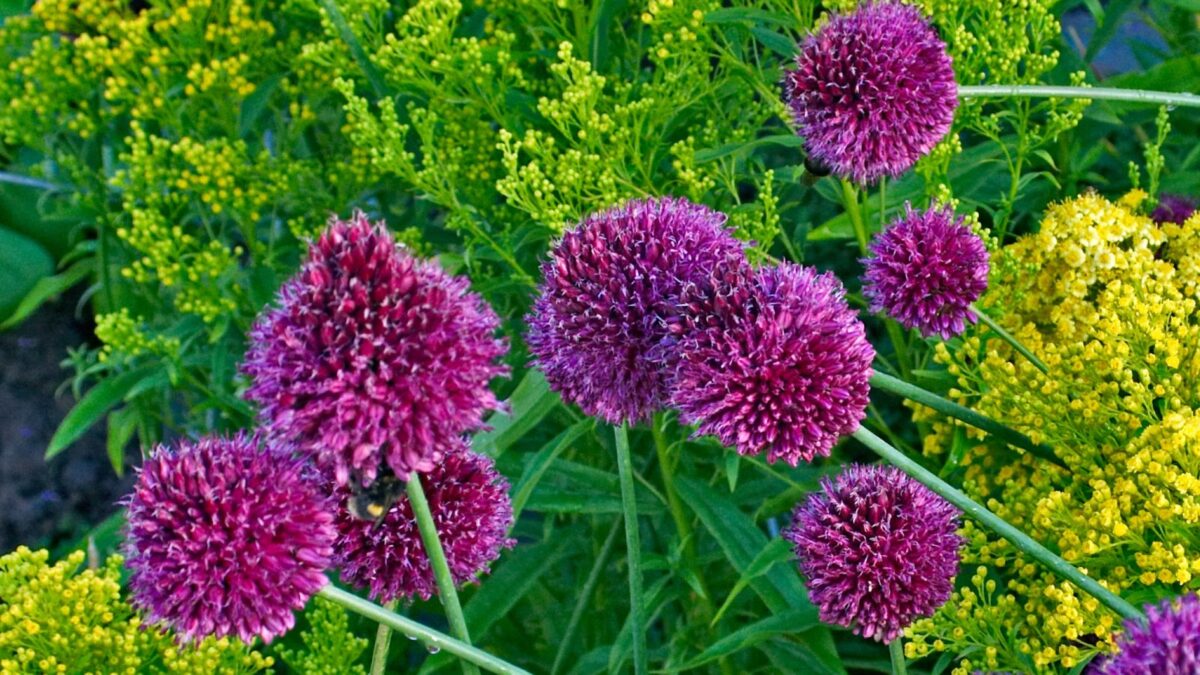
- ornamental onion (Allium)
- false indigo (Baptisia australis) – can tolerate light shade
- German bearded iris (Iris germanica) – will tolerate light shade
- coral bells (Heuchera)
- butterfly bush (Lepidoptera) – grows well in partial shade but will have fewer blooms
- pasque flower (Pulsatilla)
- foxglove (Digitalis purpurea)
- anise hyssop (Agastache foeniculum)
- clustered bellflower (campanula glomerata)
Need More Ideas for Your Shade Garden?
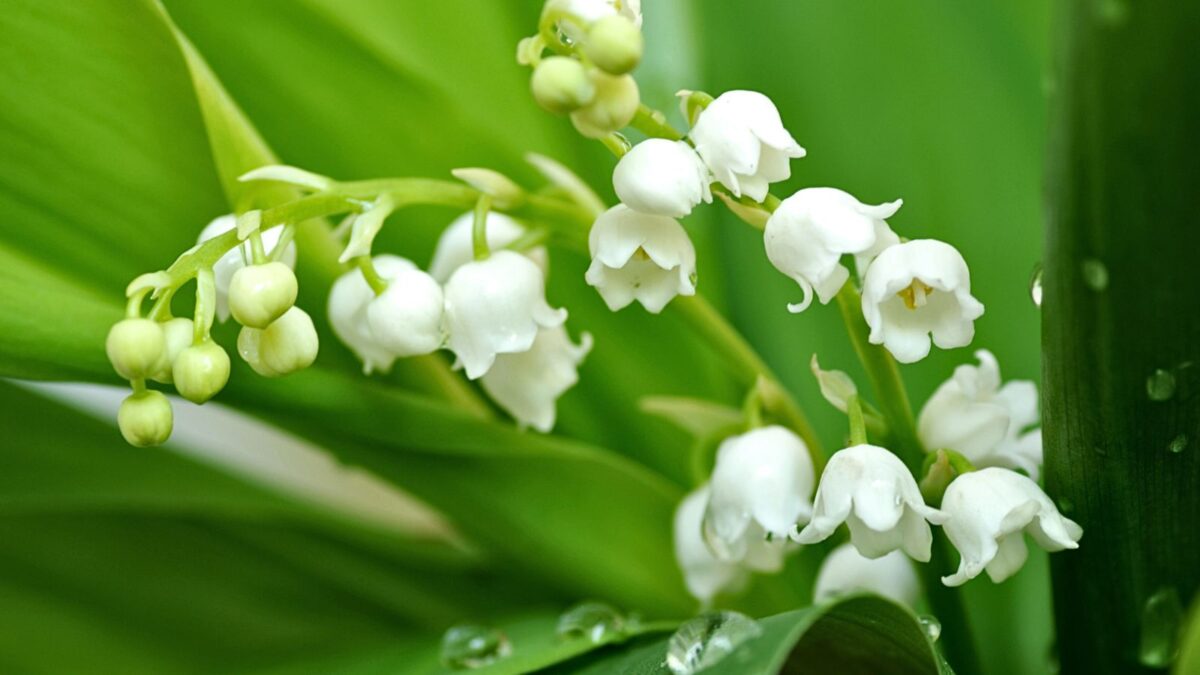
If you need more help creating a beautiful garden in a shaded area of your yard, you’ll love these:
- 11 shade-loving plants
- 9 blue shade perennials
- 9 pink shade perennial flowers
- 9 white shade perennials
- 5 red blooming shade perennials
- 10 yellow perennials for shade
- Kathy’s beautiful shade garden
- Vegetables that grow in the shade
Hopefully, you found one or more purple-blooming plants that provide unique and diverse textures and shapes to your shade garden. These perennials thrive in partially shaded areas and are a great solution for areas where the full sun may be limited.

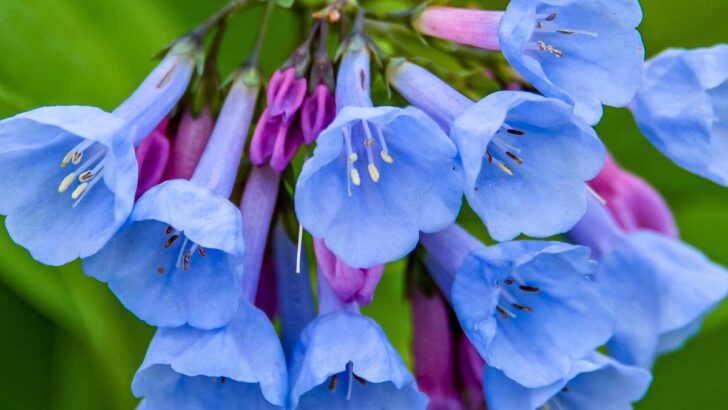

5 Red Shade Perennials For Your Low Light Garden
Sunday 2nd of April 2023
[…] 10 purple shade perennials […]
9 Pink Shade Perennials To Liven Up A Shady Garden
Sunday 2nd of April 2023
[…] 10 purple shade perennials […]
9 Pristine White Shade Perennials For Low Light Gardens
Friday 31st of March 2023
[…] 10 purple shade perennials […]
9 Stunning Blue Shade Perennials
Friday 31st of March 2023
[…] 10 purple perennials for shade […]
Sally McGuire
Friday 3rd of March 2023
Love that you included some natives. Would like to see more plant origins in your descriptions. Thank you!